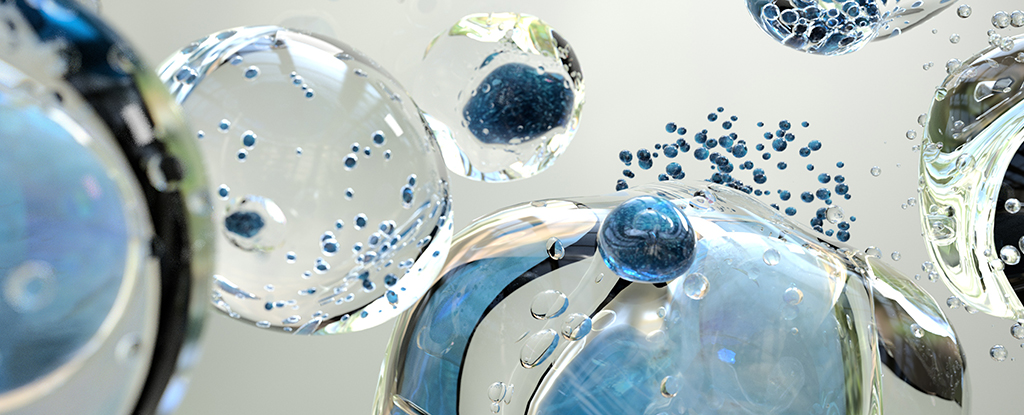Products You May Like
The dazzling beauty of a snowflake is testament to the amazing shapes water can form below freezing point.
Placed under pressure, the elegant dance of the H2O molecule contorts into something bizarre at super chilly temperatures, virtually tying themselves in knots to avoid transforming into ice.
Researchers from the University of Birmingham in the UK and Sapienza Università di Roma in Italy examined the behavior of molecules in pressurized liquid water placed under conditions that would usually cause it to crystallize.
Based on a novel way to model the behavior of water as a suspension of particles, they identified key features of two different liquid states; one ‘topologically complex’, linked in an overhand knot similar to a pretzel, the other in a more low-density formation of simpler rings.
“This colloidal model of water provides a magnifying glass into molecular water, and enables us to unravel the secrets of water concerning the tale of two liquids,” says University of Birmingham chemist, Dwaipayan Chakrabarti.
Theories laid down in the 1990s have hinted at the kinds of molecular interactions that could be going on when water is supercooled – chilled to temperatures below their typical freezing point without solidifying.
Scientists have been pushing the limits on cooling water without it flipping into a solid state for years now, eventually managing to hold it in a chaotic liquid form at an insanely cold –263 degrees Celsius (–441 degrees Fahrenheit) for a split moment without it turning into ice.
As far as progress has been made on demonstrating these states in the laboratory, scientists are still trying to work out exactly what supercooled liquids look like when deprived of heat.
It’s clear that at critical points, competing polar attractions between water molecules rise above the thermodynamic buzz noise of jiggling particles. Without the elbow room to push into a crystalline form, molecules need to find other comfortable configurations.
With so many factors at play, researchers typically try to simplify what they can and focus on the important variables. In this case, looking at ‘clumps’ of water as if they are larger particles dissolved in the liquid helps better understand transitions from one arrangement to another.
Computer models based on this perspective pointed to a subtle change between the water pushing apart, and a form made of particles that settle closer together in a more dense form.
Interestingly, the shape – or topology – of molecular interactions in this aquatic landscape also looked completely different, with molecules becoming tangled in intricate networks as they huddle in, or as much simpler forms as they push apart.
“In this work, we propose, for the first time, a view of the liquid-liquid phase transition based on network entanglement ideas,” says Francesco Sciortino, a condensed matter physicist at Sapienza Università di Roma.
“I am sure this work will inspire novel theoretical modeling based on topological concepts.”
This strange space of entangled particle networks is ripe for exploring. Though not entirely dissimilar to long chains of covalently-bonded molecules, such knots are transient, swapping out members as the liquid environment shifts.
Given their tangled interactions, the nature of the liquid water found in high-pressure, low-temperature environments should be quite unlike anything we’d find sloshing about on Earth’s surface.
Knowing more about the topological behavior of not just water under these conditions but other liquids could give us insights into the activity of materials in extreme or hard-to-access environments, like depths of distant planets.
“Dream how beautiful it would be if we could look inside the liquid and observe the dancing of the water molecules, the way they flicker, and the way they exchange partners, restructuring the hydrogen bond network,” says Sciortino.
“The realization of the colloidal model for water we propose can make this dream come true.”
This research was published in Nature Physics.
